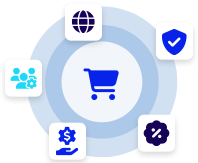A SaaS Agreement, also known as a Software-as-a-Service Agreement, is a legally binding contract between a SaaS provider and a customer. It governs the terms and conditions under which the SaaS provider grants the customer the right to access and use their software application over the internet as a service.
In a SaaS model, the software is hosted on the SaaS provider’s servers, and users can access it through web browsers or other client applications without needing to install or maintain the software on their own devices. The SaaS Agreement outlines the rights and responsibilities of both parties and typically covers the following key elements:
- Service Scope: This section describes the specific services and functionalities offered by the SaaS provider. It outlines the features, limitations, and any support or maintenance services included.
- User Access and License: The agreement defines the terms under which the customer is granted access to the SaaS platform. It usually involves a non-exclusive, non-transferable license to use the software for a specified period.
- Payment Terms: The agreement details the pricing structure, including any subscription fees, usage-based charges, or one-time setup fees. It also covers payment methods, billing cycles, and any applicable taxes.
- Data Privacy and Security: This section addresses how customer data will be handled and protected. It may include provisions related to data encryption, data storage, data ownership, and the SaaS provider’s compliance with data protection laws.
- Intellectual Property: The agreement clarifies the ownership of intellectual property rights related to the SaaS software. Typically, the SaaS provider retains ownership of the software, and the customer is granted a license to use it.
- Service Level Agreement (SLA): In some cases, the agreement may include an SLA that defines the minimum level of service and uptime guarantees. SLAs ensure that the SaaS provider maintains a certain standard of performance.
- Termination and Cancellation: This section outlines the conditions under which either party can terminate the agreement, including notice periods and any associated penalties.
- Liability and Indemnification: The agreement usually addresses the limitations of liability for both the SaaS provider and the customer. It may also cover indemnification clauses to protect each party from third-party claims.
- Confidentiality: This section defines how both parties should handle each other’s confidential information and data.
- Governing Law and Jurisdiction: The agreement specifies the governing law and jurisdiction where any legal disputes will be resolved.
SaaS Agreements are essential in establishing a clear understanding between the SaaS provider and the customer, promoting transparency, and protecting the interests of both parties throughout their business relationship. It is crucial for both parties to carefully review and negotiate the terms of the agreement before entering into it.













